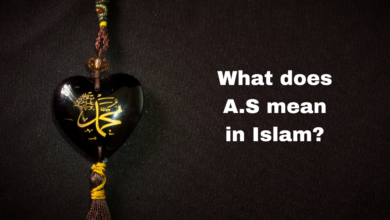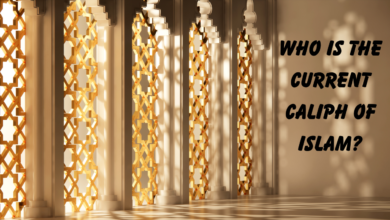Why was the Hijra a turning point for Islam?

Introduction
The Hijra, the migration of the Prophet Muhammad (peace be upon him) and his followers from Mecca to Medina in 622 CE, marked a pivotal moment in the history of Islam that has had far-reaching implications for the faith and its followers. This event, which holds immense religious, social, and political significance, transformed the fledgling Islamic community and laid the foundation for the expansion and establishment of Islam as a global force.
Escape from Persecution
The Hijra was born out of necessity. The early Muslim community in Mecca faced intense persecution and oppression at the hands of the pagan Quraysh tribe. The Prophet Muhammad and his followers were subjected to various forms of cruelty and hardship, leading to the need for a safe haven where they could practice their faith without fear of persecution. The migration to Medina provided this opportunity for Muslims to live and worship freely.
Establishment of a Model Society
The migration to Medina allowed the Prophet Muhammad to establish a cohesive and egalitarian society. The Constitution of Medina, an early constitution that governed the relationship between various tribes and religious groups in the city, highlighted the principles of cooperation, justice, and mutual protection. This historic document provided a blueprint for social cohesion and cooperation, promoting unity among diverse groups under the banner of Islam.
Transformation into a Political Leader
In Medina, the Prophet Muhammad transitioned from being solely a religious leader to also assuming political leadership. This transformation allowed him to establish a system of governance that was rooted in justice, equality, and consultation. His leadership laid the groundwork for a new kind of governance that combined both spiritual guidance and administrative wisdom, influencing subsequent Islamic states and shaping their structures.
Consolidation of the Muslim Ummah
The Hijra played a pivotal role in uniting the Muslim community (Ummah). The migrants from Mecca and the residents of Medina, known as the Ansar (helpers), formed a powerful bond, exemplifying the strength of brotherhood and sisterhood in Islam. This unity was instrumental in overcoming challenges and fostering a sense of solidarity, enabling the Muslims to confront both internal and external threats.
The Beginning of the Islamic Calendar
The Hijra also marks the beginning of the Islamic calendar, known as the Hijri or Lunar calendar. This shift from the Julian calendar to the Hijri calendar reflects the importance of the Hijra as a defining moment in Islamic history. The Islamic calendar is a constant reminder of the spiritual journey that Islam has taken since the migration, reinforcing its significance in the hearts and minds of Muslims around the world.
Expansion of Islam
The migration to Medina marked the start of a period of growth for Islam. The city of Medina served as a launching pad for various military campaigns and diplomatic efforts, which ultimately led to the spread of Islam beyond the Arabian Peninsula. The establishment of a strong Muslim state in Medina provided a foundation for the broader expansion of Islamic influence across continents.
Conclusion
The Hijra stands as a turning point in the history of Islam for its multifaceted impact on the faith and its followers. It was a response to persecution, a blueprint for a model society, a transformation of leadership roles, a consolidation of the Muslim community, and the beginning of a new calendar. The events surrounding the Hijra not only shaped the destiny of Islam but also left an indelible mark on the global course of history. It remains a source of inspiration, unity, and resilience for Muslims worldwide, symbolizing the triumph of faith in the face of adversity and the power of migration to shape the destiny of nations.
FAQs about Why the Hijra was a Turning Point for Islam
What is the Hijra in Islam?
The Hijra, also known as the Migration, refers to the historic journey of Prophet Muhammad and his followers from Mecca to Medina in the year 622 CE. This event holds great significance in Islamic history.
Why was the Hijra a turning point for Islam?
The Hijra marked a pivotal moment for Islam because it marked the transition from a period of struggle and persecution in Mecca to a period of establishment and growth in Medina. This transition had profound implications for the development of Islamic beliefs, community, and politics.
How did the Hijra impact the Islamic community?
The Hijra led to the formation of the first Muslim community in Medina, which became a model for Islamic society. Muslims in Medina lived under a political and social structure, allowing them to practice their faith openly and establish laws based on Islamic principles.
What challenges did Muslims face before the Hijra?
Before the Hijra, Muslims faced intense persecution and opposition in Mecca from the ruling tribes. They were subjected to economic boycotts, physical abuse, and even attempts on their lives due to their beliefs in monotheism and the message of Prophet Muhammad.
How did the Hijra change the relationship between Muslims and non-Muslims?
The Hijra shifted the dynamics between Muslims and non-Muslims. In Medina, Muslims established treaties and alliances with various tribes, fostering a sense of unity and cooperation between different groups.
What role did Prophet Muhammad play in the Hijra?
Prophet Muhammad played a central role in guiding the Hijra and ensuring the safety of his followers during the journey. His leadership helped consolidate the Muslim community in Medina and solidify its identity.






